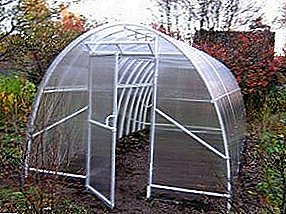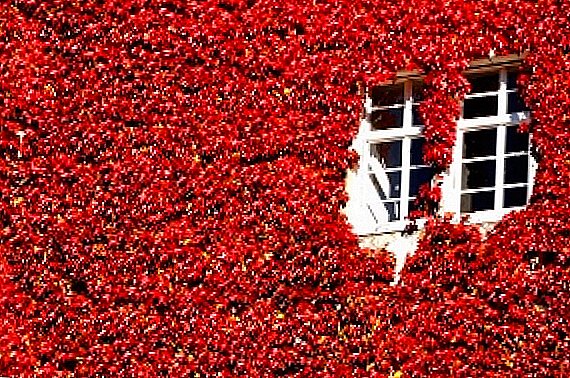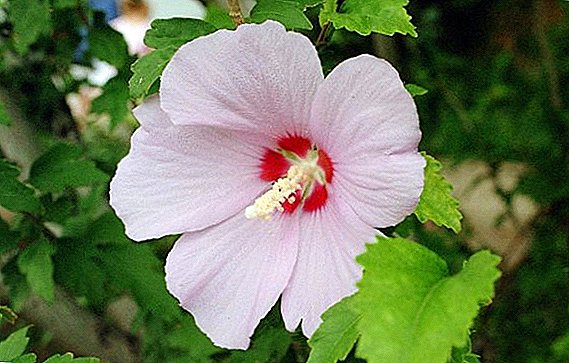
Haworthia Striped is a succulent that belongs to the Asphodelov family. In its natural environment, it is found in arid and rocky areas of Africa.
This amazing plant can decorate any apartment, but you need to properly care for it. If the correct growing conditions are not followed, the thermophilic havortia will hurt. Read about its features below.
What is this plant?
Such a plant does not have a stem. But it is characterized by a rosette consisting of linear and pointed vagina. They look like aloe leaves.. The surface of the leaf is often dark green, it is rough and has a large number of tubercles, which are painted in a white tint. On the lower side, they merge into strips due to which the plant has received this name.
In the spring, in the process of flowering, a long peduncle grows from the center, reaching 90 cm. It has a few-flowered, spike inflorescence. The flowers are small, inconspicuous. The crown is notched, it can be revealed in different shades.
A photo
Check out the photo of the plant:




Caring for havortiya striped at home
In nature, such a plant has a slightly different appearance; however, if all the necessary conditions are created, then on the windowsill the havortia striped will feel great. Since the plant saves the life-giving water, it always has a sufficient amount of moisture.
The hallmark of this plant are rough, dense leaves, on which can be warty patterns. This species has small points in large numbers instead of warts.
Lighting
Placing the succulent in the room, it is better to set the pot with him in the south or east direction. Hawortia prefers diffused light, it does not tolerate direct sunlight or shade in large quantities.
Air and temperature
Succulent loves cool, so it can be kept at a temperature of 15-25 degrees. If the room is too hot, you will need to provide fresh air. You can also take a plant pot to the garden or to the balcony. But keep in mind that it must be protected from rain.
In winter, havortia falls into a dormant period - it needs to lower the temperature to 10 degrees. If the socket is not too large, the plant will feel great between the window frames. Large copies should be fenced off from the warm air in the room with a transparent box.
The soil
Striped havortia prefers weak soils. It has good moisture and water permeability.
TIP: You can independently make a suitable mixture by taking small gravel, coarse sand, broken shell rock and clay in equal proportions. And if you do not want to bother, just buy the soil for cacti and succulents.
When landing on the bottom, it is important to create good drainage. The pot must be chosen, focusing on the system of roots. It should not be less than the roots.
Watering
 Haworthia Striped requires moderate amounts of water.. In the spring, autumn and summer it is better to do watering 2 times a week, and in the winter it is enough once every 2 weeks.
Haworthia Striped requires moderate amounts of water.. In the spring, autumn and summer it is better to do watering 2 times a week, and in the winter it is enough once every 2 weeks.
Make sure that the top layer of soil is not wet - the earth should dry out between waterings. Watering the succulent should be careful not to let water enter the outlet, as this can lead to decay. If you notice that the lower leaves are drooping, this indicates excessive watering.
Top dressing
Dressing havortiya striped should be carried out in late spring, as well as in early summer. Fertilize this plant with a solution for decorative cacti and succulents.. The frequency of feeding - 1 month. If you overdo it with fertilizer, the leaves may turn yellow or turn red.
Transfer
It is necessary to replant and update plants every 3 years, if the pot has become too small. If in the period of rest dying of the roots is observed, then the transplant is done immediately.
For planting you need to use a shallow, wide and low capacity. In large pots striped havoria will grow in depth, not up. Home care consists of planting a succulent in a plastic round pot.
Watch a video on the care of succulent Haworthia Striped:
Breeding havorti striped
The best time to breed such a plant is spring. The methods that can be applied are as follows:
- By children. In the process of transplanting the roots of the children are seated in separate pots. Basal rosette planted in a wet substrate.
- Seeds. Reproducing havortiu this way is not so easy, because it will take a lot of time. This method will appeal to breeders.
- Leaves. They are cut off from the bush, and after they lie down for a while, they are placed in loose soil moistened with water, or in a sandy substrate. The plant is not watered for 1 month and during this time it begins to take root.
Watch a video on breeding of havorti striped:
Possible problems and pests
Problems that may appear with striped havoria include the following:
- Roots dry out of waterlogging.
- The bush mows due to reaching for the light. To avoid this, it is worthwhile to unfold the pot by the other side.
- Waterlogging can cause darkening, as well as rot on the leaves.
As for diseases and pests, they can be represented as follows:
 Mealybug. It settles down at the bottom of the leaves and forms patches of cellulose type. Often they have a white color.
Mealybug. It settles down at the bottom of the leaves and forms patches of cellulose type. Often they have a white color.A very effective method of struggle will be the treatment of the plant with a cotton swab, which should first be moistened with alcohol. So you can remove all the parasites. But that is not all. Complete the procedure necessary treatment of leaves with soap and water.
 Shchitovka. It often occurs on the underside of the leaves. It looks like yellow spots. On the discharge can often settle soot mushroom.
Shchitovka. It often occurs on the underside of the leaves. It looks like yellow spots. On the discharge can often settle soot mushroom.The method of struggle will be to clean the leaves with a brush dipped in a solution of soap or alcohol. If the infection is too strong, you should treat the havortiya with actellic or carbonic phosphorus.
Conclusion
Thus, you got acquainted with the plant such as havortiya striped. If you have a desire to create an incredible beauty on your windowsill, and you really love flowers, then in this case, you should definitely get this succulent. It is not difficult to take care of him, and the plant will delight with its beauty for more than 10 years.


 Mealybug. It settles down at the bottom of the leaves and forms patches of cellulose type. Often they have a white color.
Mealybug. It settles down at the bottom of the leaves and forms patches of cellulose type. Often they have a white color. Shchitovka. It often occurs on the underside of the leaves. It looks like yellow spots. On the discharge can often settle soot mushroom.
Shchitovka. It often occurs on the underside of the leaves. It looks like yellow spots. On the discharge can often settle soot mushroom.









